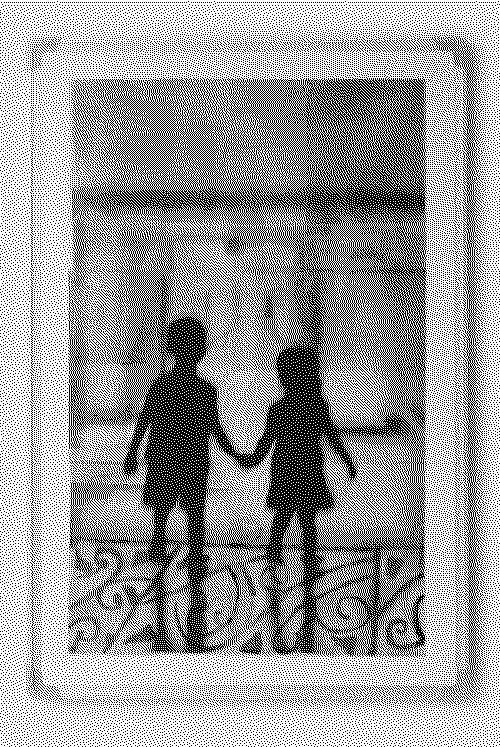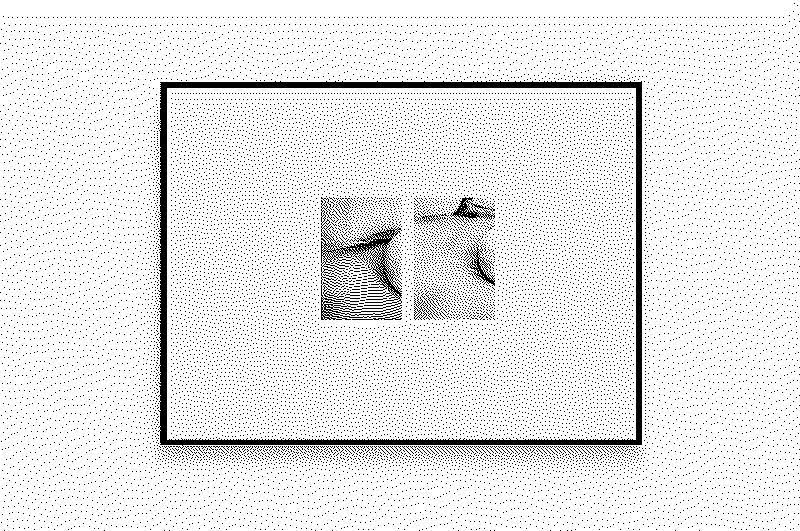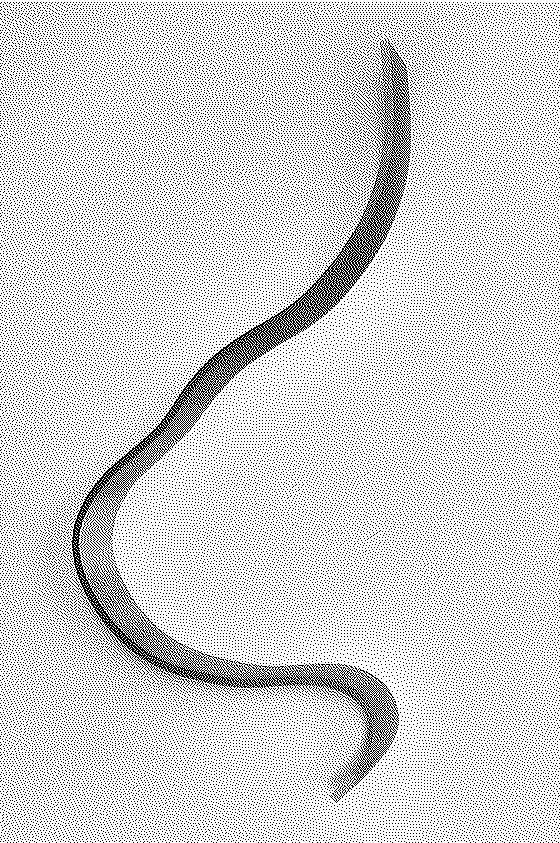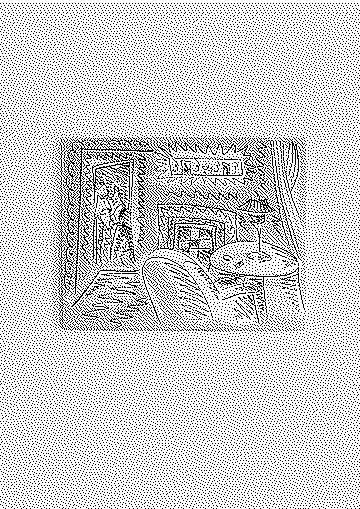Paper Anniversary
Rangi White’s Aa-Ee-Ii-Oo-Uu, Tony Guo’s Dogtooth, Ophelia Harradine Bayly’s Witching Hour, Eleanor Cooper’s Shipwreck, and Glenn Otto’s The Kids have lost their Parents.

In Aa-Ee-Ii-Oo-Uu, Rangi White (Rongomaiwahine, Ngāti Kahungunu Ki Wairoa) constructs untold lessons within the apparatus of state education. Arranged through OHP foils and marker pens, whiteboards and graphic resources, White repurposes the teacher’s tools to tell another story, one to unnerve and alarm those living in Aotearoa. Beginning with the vowel-chart Aa-Ee-Ii-Oo-Uu that is shared across te reo Māori and English, White foregrounds a disjunction, as letters and sounds fail to correlate in an education system that reinscribes colonialism.
Extending White’s engagement in Māori and settler-colonial education, Aa-Ee-Ii-Oo-Uu invokes ‘the child’ as a resonant figure within Māori story-telling and illustrative traditions. The child of Aa-Ee-Ii-Oo-Uu walks the sidewalk – a figure of conscience, innocence, and vulnerability. The world around them appears as a dark vision, a frightening place that children walk astride. In children’s stories – both Māori and Pākehā – the child may encounter a menace, as the path becomes a perilous journey leading to knowledge and recognition. The child is changed through struggle.
The Māori children’s literature series te ao Mārama (1992 - 1996) acts as source material for White, with the anthology’s editor, Witi Ihimaera, describing this mode of representation as the “harsher side of our children’s lives.” This is the tradition of Māori story-telling that Aa-Ee-Ii-Oo-Uu resides within, and in keeping with the pūrākau of te ao Marama, White affirms a journey that leads back to Māoritanga; as the forms of koiri, ngaru, and puhoro appear atop the pavement.
The young bodies of Aa-Ee-Ii-Oo-Uu are cast in silhouette, and the only light is carried by passing cars that threaten the child’s solitary walk. The light, as it is, remains. And the figure, drawn from darkness, appears as a new being of the world, a creation – te ao Mārama. This is a child shared as unity, an archetype of youth that reaches out to the world amid calls for the decolonial, the indigenous, and the emancipatory.

In Dogtooth, Tony Guo poses queer allegory through a language of figurative oil painting. Vested in modes of surrealism and absurdity, Guo entertains the trauma of “coming-out” through a series of theatrical vignettes. Here, the body is staged with a willingness to be seen and a desire for concealment, as moments of whimsy mask a journey into a captive dilemma.
Taking its name from Yorgos Lanthimos’ 2009 film, Dogtooth is riddled with irreverence and confinement, as figures find themselves caged in helpless situations and turn to the unreal. Sexual codes of queer expression surround these unclothed beings, uncertain signs of fluidity that form as vitalities unfelt by the poised figure. It’s an unruly theatre, one where figures morph and perform a transfiguration that leads to uncertain grounds.
Throughout Dogtooth, Guo carries forward drawings that elucidate the worlds formed in oil. The pages enact a disegno wrapped in queer figuration, as process and concept are embodied, and the world of Dogtooth is sensed on paper. Returning to canvas and Guo’s brush continues to slip. The invocations of oil are gestural, vying for opacity and attending to detail, as the painter enacts an expansive register that teeters into abstraction.
There among the blackened domains of Dogtooth, the artist’s body remains caged. The figure is cast and recast in an obsessive enactment of the Self. The layered bodies unfold as a mirror stage, as the paintings perform a reckoning within. There is a potential to cohere within this psycho-theatre, to discover one’s own catharsis through the mediums enacted. Still, the plain remains dark, and Dogtooth’s promise is unrealised as the young man's body is contorted and arranged atop the stage.

In Witching Hour, Ophelia Harradine Bayly attests to the world of infancy and motherhood. Commemorating her daughter’s first year of life, Harradine Bayly carries a camera into the ephemera of early childhood, searching for sensual memories. Though Witching Hour is more than a Mother’s doting portrait, as unfettered materials enter her lens, describing unhinged terrains.
Extending a photographic practice that searches among the everyday, Harradine Bayly looks closer in Witching Hour, attending to surface and skin alike. The Mother’s body appears alongside the child’s, and the flesh made indistinguishable through Harradine Bayly’s forensic attention. This slip between the Mother and the Child is laced with art historical and developmental resonances, as the two hold a unity of touch after birth.
Witching Hour wanders, drifting into the tedium and meditation of an infant's presence. Yet another bubble is blown, and the feeding is felt through every pore of the skin. The Mother sometimes intervenes in the child's world, laying daisies like a constellation among the first curls. The materials of a home are seen anew as the mother's camera traces the Child’s attention, recalling the nipple, the crumb, and the woollen fleece.
Witching Hour resides in a tradition of ‘the familial’ that includes Sharron Olds and Catherine Opie, queer and feminist perspectives that speak to the tension and tenderness within our intimate bonds. Harradine Bayly embodies this praxis, and Witching Hour carries the sombre mood of a difficult adoration. Here, artistry contends with daily joys and tribulations as moments are carved out for remembrance from the Mother’s eye.

Cast into the sea
of destitution IIII
to drift
by night and by day upon
current immemorial.
– Extract from Oceanic Invocation, Jasmine Gallagher
As an archipelago in the notorious roaring forties, Aotearoa New Zealand is marked with the remnants of shipwrecks (at least 2300 wrecks since 1790). Eleanor Cooper’s Shipwreck takes this maritime history as its point of departure, creating a series of ethereal lines that descend into the depths. It’s an appropriate practice for a sailor, as Cooper – who lives aboard a 30-foot yacht – creates a vision of the sea through a language of abstraction.
Created in the ‘inter-tidal zone’ near her mooring in Porirua, the laminated lines of Shipwreck reflect the Artist's recent induction into boat building. The engagement with new skills is a recurrent theme within Cooper’s practice, and here, the boat’s ongoing repair is a necessary assurance of its sea worth. However, it’s not all practical, as the Artist adheres gradients of sand atop the timber, forming a minimal allusion through the sediment. These abstracted vessels are imagined as perpetually in the wreckage, a contorted construct that drifts into aesthetic modes.
The Artist dwells, naming the lines after prominent shipwrecks in Aotearoa – White Swan, Muriel, Comet, and Queen Bee – each one another tale of maritime disaster. The laminated lines also attend to something beyond – a lingering spirit of romanticism, as the line performs a sense of ‘The Unknown.’ Perhaps, it’s an itinerant line of a sailor lost at sea or a collapsing waveform on the shore. The lines are possessed of the spirit that informed the maritime literature of the 19th century, stories that captivate the Artist on long voyages. Shipwreck dove-tails with this sublime, dissolving between nature and the line.
Cooper's own journal attests to the sailor’s travelling imagination. The mind travels far when there’s no land in sight – sometimes, too near oblivion. This hull may contain dread, as the captive sailor is caught between “the Devil and the Deep Blue Sea”. It is this other image of the sea that Cooper rests on. It is the sea of ominous force cloaked in darkness, treating sailors with malevolence and strewing them back ashore. Shipwreck takes the aesthetics of settler dread out to sea and promises no voyage home.

Glenn Otto’s The Kids have lost their Parents offers an interpolation. The term associated with popular musicology references older forms through new processes of adaptation. The past recalled here is the ‘Berlin of the 1920s’, an iconic imagining of bohemia that would later define the nouveau riche through the canvases of Ernst Ludwig Kirchner. The paintings of The Kids have lost their Parents trace the memory of these vignettes, reprising cafes and bistros in Otto’s language of calligraphic figuration.
The surfaces of The Kids have lost their Parents attest to Otto’s profession as a house painter. What appears to be the beige tone of unprimed linen is, in fact, the stretched drop sheets of commercial painting. And the paints are all sourced from the walls of Auckland society, such as Cardrona, a pigment of the Dulux colour chart that figures prominently in Otto’s canvases. This economy of means has proven an enduring methodology for the artist, as the studio offers Otto an altogether different labour in paint, one reflective of – rather than in decorative service to – Auckland’s ever-escalating asset class.
Still, there are few things as ‘Auckland’ as a cafe scene, and while drawn to the contours of Kirschner’s Berlin, Otto’s paintings are nonetheless resonant with his own context. The artist keenly observes his prospective audience during his routine walks through Auckland’s central western suburbs. The Impressionists were often distracted by the luxury of emerging consumer culture, and Otto mirrors this attention, attending curiously to ornamentation in a language of modernist kitsch. The figures themselves are desirously framed in their environments, an extravagance caught in the line of a hat or flared collar and punctuated in forms reminiscent of the Memphis Group.
In reprising older forms, the artist is interpolating all that has already proven desirous – a safe bet. The paintings of The Kids have lost their Parents compile this desire for decorative and art vernaculars of the twentieth century, as the canvases become repositories of the sweetened symbols of class ascension. Mounted on the street face, the paintings also appear fittingly placed, as Paper Anniversary connects to a fashionable restaurant and a subtle satire is staged. The Kids have lost their Parents constructs an updated portrait of the nouveau riche, a place where Auckland society ventures out to be seen and perhaps, in their finery, enact an older decadence.
2023-2024